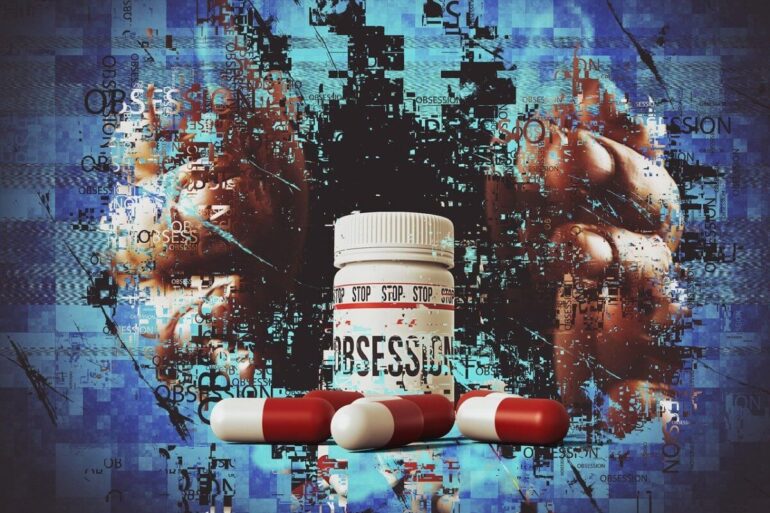TL;DR:
- AI-driven drug discovery is rapidly transforming pharmaceutical industry.
- Halicin, an antibiotic discovered using AI, highlights speed and efficiency of AI-assisted drug development.
- AI model trained on diverse molecules, identifying halicin quickly compared to traditional methods.
- AI addresses antibiotic-resistant ‘superbugs,’ a longstanding health challenge.
- AI accelerates drug discovery, with the potential to counter 10 million annual drug-resistant deaths projected by 2050.
- AI augments human expertise, enabling faster exploration of drug candidates.
- Trustworthiness remains crucial in AI’s role in healthcare decision-making.
- AI milestones from Stanford’s DENDRAL project to DeepMind’s Alphafold contribute to medical AI’s progress.
- AI-driven drug candidates emerge, heralding a new era in pharmaceutical innovation.
- AI reshapes drug discovery, promising a future with faster and more effective disease treatments.
Main AI News:
The rapid evolution of artificial intelligence (AI) is poised to reshape the landscape of drug discovery, with groundbreaking implications for the pharmaceutical industry. In the visionary 1968 novel and cinematic masterpiece, “2001: A Space Odyssey,” Hal, an artificial intelligence system, perpetrates fatal actions against the astronauts onboard. Interestingly, in today’s reality, the term “Hal” carries a distinct resonance—it symbolizes a conqueror of a different sort, one that targets bacteria rather than humans.
This dichotomy between fiction and reality came into focus in February 2020 when researchers from the Massachusetts Institute of Technology harnessed the power of AI to unveil a revolutionary antibiotic named halicin. Designed to combat infections caused by E. coli and antibiotic-resistant strains, halicin represents an emblem of AI-assisted drug discovery. Remarkably, the trajectory from concept to realization was swift—a testament to the agility of AI. By training their AI model on a diverse set of molecules, including FDA-approved drugs and natural compounds, the scientists unlocked the potential of halicin. This discovery not only highlights AI’s acceleration of drug development but also its ability to counteract the pressing challenge of antibiotic-resistant bacteria.
The narrative behind halicin underscores the paradigm shift ushered in by AI. Traditionally, the drug discovery process was characterized by protracted timelines and exorbitant costs. However, with the advent of AI, the landscape has transformed dramatically. The swift identification of halicin from a vast array of chemical compounds exemplifies AI’s unparalleled efficiency. In contrast to the traditional methods that often spanned over a decade, AI technology can now evaluate more than 100 million chemical compounds in a matter of days.
This newfound speed is of paramount importance, especially given the grim projections associated with drug-resistant diseases. Current estimates predict an alarming rise in drug-resistant deaths, reaching 10 million annually by 2050. The healthcare sector finds itself ensnared in a “discovery void,” with scientific advancements stalling since the identification of the last successful antibiotic class in 1987. The emergence of AI as a catalyst for change is poised to rectify this stagnation.
However, it is important to emphasize that AI does not operate in isolation. Rather, it is a potent tool that empowers scientists to navigate the intricate landscape of drug discovery. As the CEO of biotech firm Recursion, Chris Gibson aptly articulates, that AI augments human expertise and fosters accelerated exploration. The automotive analogy resonates strongly—the shift from artisanal to industrialized science, mirroring the transformation of automobile manufacturing, exemplifies the potent synergy between AI and human intellect.
Nonetheless, AI’s prowess is not without limits. Trustworthiness remains a pivotal concern, particularly in safety-critical domains such as healthcare. The balance between AI’s reasonable responses and occasional inaccuracies underscores the need for a measured approach. The role of AI in decision-making processes, especially in medical contexts, necessitates a comprehensive evaluation of reliability.
The journey of AI in medicine has traversed several key milestones, from the pioneering efforts of Stanford’s DENDRAL project in the 1960s to the advent of deep learning in the 2010s. The recent emergence of AI-driven drug candidates, such as Insilico Medicine’s INS018_055, signifies a new era in pharmaceuticals. Yet, while AI catalyzes innovation, it is not an autonomous creator; the essence of discovery still rests with human ingenuity.
In the grand tapestry of drug discovery, AI occupies a pivotal role, accelerating processes, improving efficiency, and propelling the industry into uncharted territories. With AI as an ally, the quest for novel drugs takes on a dynamic dimension—one that holds the promise of a future where diseases are conquered swiftly and effectively. The story of AI in pharmaceuticals continues to unfold, poised to rewrite the script of drug discovery for generations to come.
Conclusion:
The convergence of artificial intelligence and pharmaceuticals is revolutionizing drug discovery. AI’s ability to swiftly identify novel drug candidates, such as the antibiotic halicin, exemplifies its potential to address pressing healthcare challenges. As AI-generated drug candidates progress toward clinical trials, a transformative shift in pharmaceutical development is underway, promising faster and more efficient drug discovery processes. This paradigm shift has far-reaching implications for the healthcare market, potentially leading to accelerated innovation, improved patient outcomes, and reduced costs in the pharmaceutical industry.

